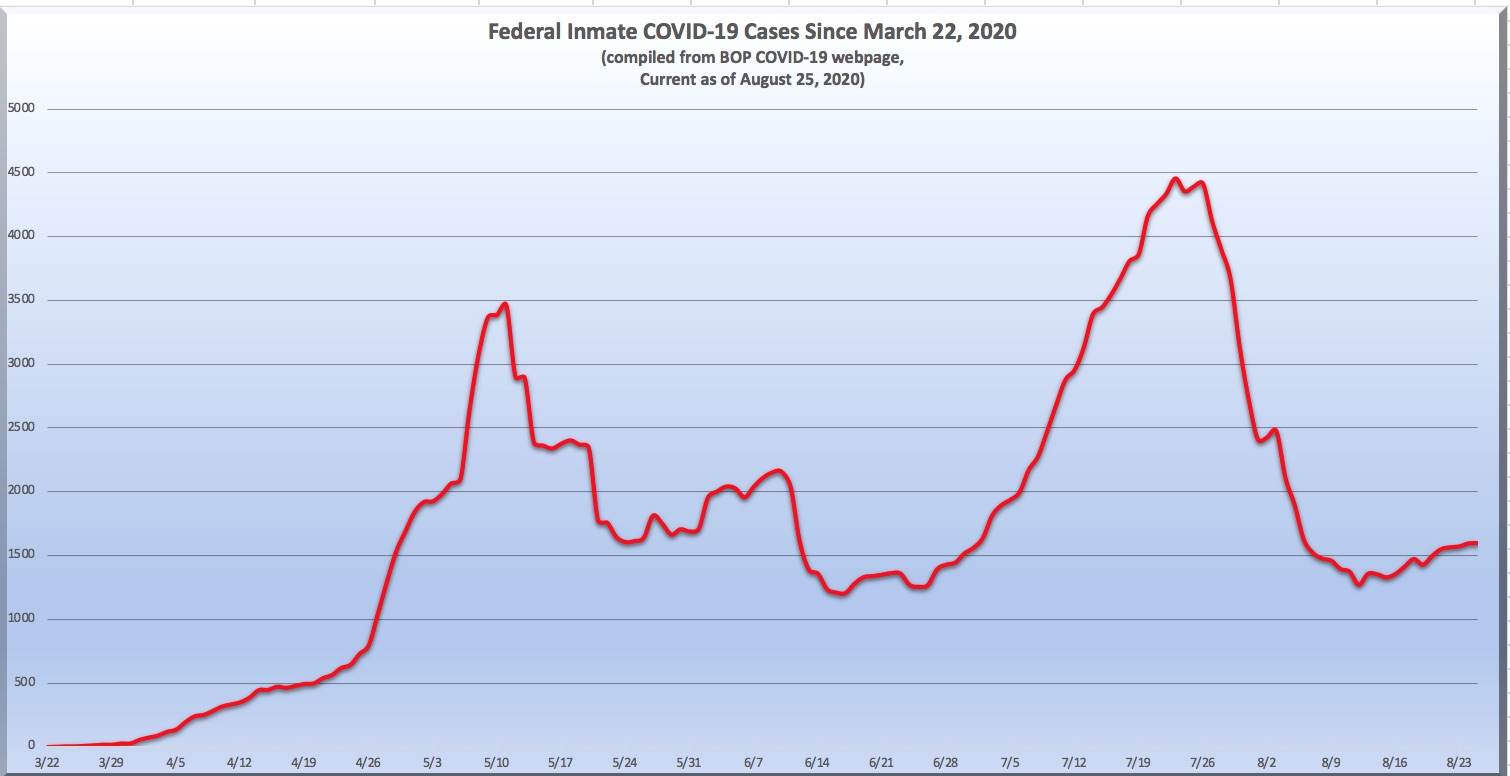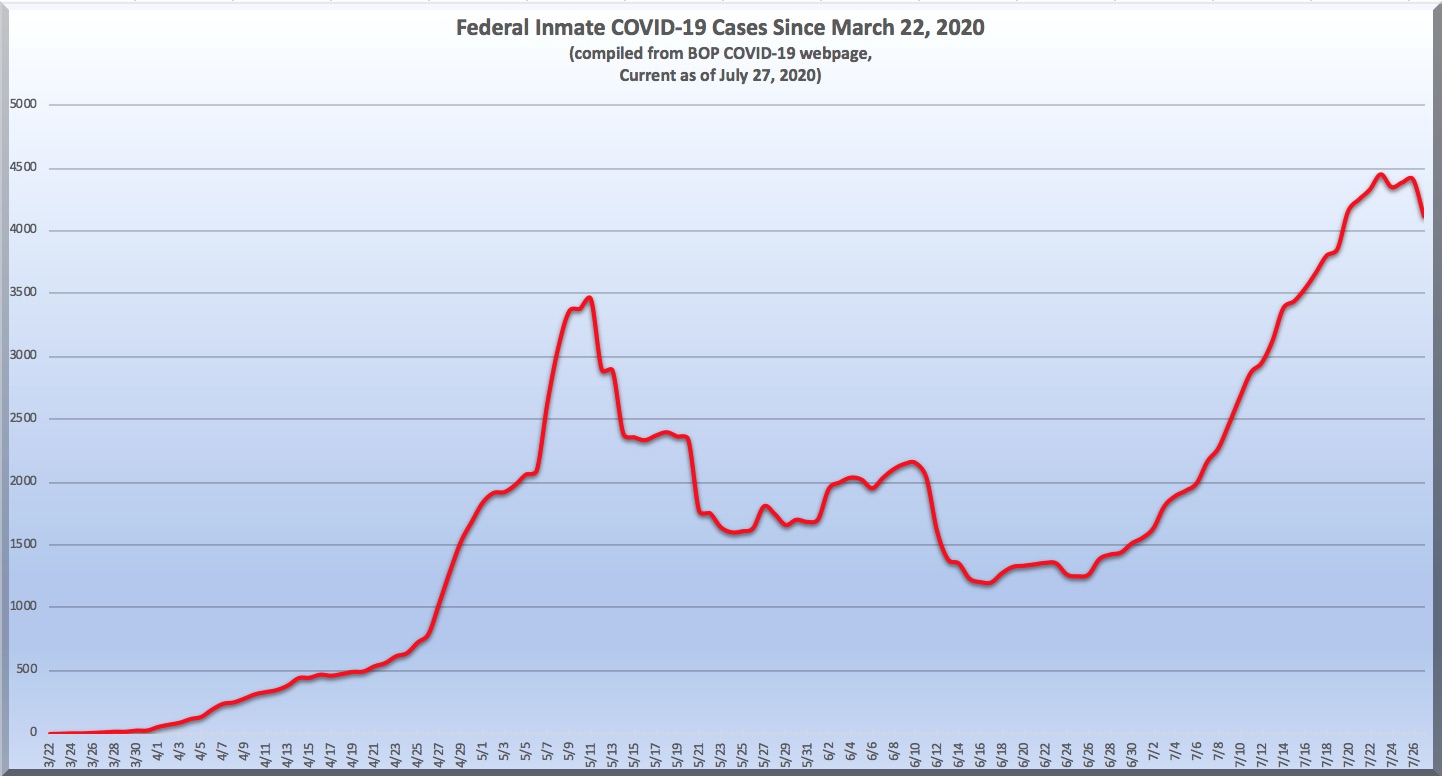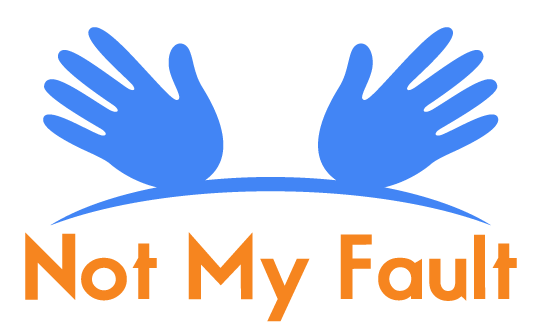We post news and comment on federal criminal justice issues, focused primarily on trial and post-conviction matters, legislative initiatives, and sentencing issues.

BOP LOSING AT WHACK-A-MOLE
 Not quite three months ago, Bureau of Prisons Director Michael Carvajal confidently told the Senate Judiciary Committee, “at this point, we have more recoveries than new infections. And I believe that this shows that we are now flattening the curve.”
Not quite three months ago, Bureau of Prisons Director Michael Carvajal confidently told the Senate Judiciary Committee, “at this point, we have more recoveries than new infections. And I believe that this shows that we are now flattening the curve.”
What is being “flattened” is the BOP’s response to the pandemic.
Twelve weeks later – after inmates spiked July 26 at 4,413 – the BOP’s numbers have stopped falling, and in fact increased slightly. As of Tuesday night, 1,597 inmates were sick, up 8% from last week. Sick staff numbered 638, up 11% from a week ago, four more inmates died, bringing the total to 122, and COVID-19 was present in 109 facilities, 89% of BOP facilities.
Complaints continued last week about the BOP’s handing of the pandemic continue, mostly from staff. When the correctional officer union president at USP Thomson (Illinois) found out he was COVID-19 positive, the 20th BOP staffer there to come down with the virus, he told ABC news he had to find an independent testing site on his own. “Testing for staff isn’t available at the prison but they test inmates for COVID-19 at the prison,” ABC quoted him as saying. “Staff also can’t get tested due to being forced to work double 16-hour shifts almost on a daily basis.”
Meanwhile, the Centers for Disease Control and Prevention issued a study last week that looked at 15 prisons, including five unidentified BOP facilities. The CDC found that mass testing at the facilities “suggests that symptom-based testing underestimates the number of COVID-19 cases in these settings. Mass testing resulted in a median 12.1-fold increase in the number of known infections among incarcerated or detained persons in these facilities, which had previously used symptom-based testing strategies only.” Symptom-based testing, of course, is the preferred BOP approach, in which only inmates with symptoms get tested.
Additionally, the study found that “in two federal prisons, all persons who had tested negative during mass testing events and had subsequently been quarantined as close contacts of persons testing positive were retested after 7 days. At retesting, 20.5% of persons in BOP prison 2 and 26.8% in BOP prison 3 had positive test results.”
As of last night, the BOP had still only conducted enough tests to cover 31% of the BOP population, with 26% of those tests coming back positive.
The failure of symptoms-only testing is illustrated in the whack-a-mole problems the BOP faces. Besides USP Thomson, the BOP is facing outbreaks at FCC Petersburg (Virginia), FDC San Diego and FCI Victorville in California, FCC Coleman (Florida), and FCI Manchester (Kentucky). Numbers are finally dropping at FCI Seagoville and FCI Beaumont (both Texas).
Marketwatch ran a piece last week on the cost to taxpayers of COVID-19 in prisons, noting that “the public understands the urgent need for action. A national survey found that 66% of likely voters, including 59% of those identifying as ‘very conservative,’ believe elected officials should consider measures to reduce overcrowding in prisons and jails. Survey research over many years has shown that most Americans believe the U.S. locks up too many people.”
 Meanwhile, U.S. Senator Marco Rubio (R-Florida) is not happy, and last week, he let Attorney General William Barr know it. The Miami Herald reported that “nearly nine months after demanding an investigation of allegations of rampant sexual abuse at Coleman Federal Correctional Complex exposed in a Miami Herald story, Sen. Marco Rubio says he still hasn’t gotten a ‘substantive response’. And he is not happy — especially since there is new cause for concern with COVID-19.”
Meanwhile, U.S. Senator Marco Rubio (R-Florida) is not happy, and last week, he let Attorney General William Barr know it. The Miami Herald reported that “nearly nine months after demanding an investigation of allegations of rampant sexual abuse at Coleman Federal Correctional Complex exposed in a Miami Herald story, Sen. Marco Rubio says he still hasn’t gotten a ‘substantive response’. And he is not happy — especially since there is new cause for concern with COVID-19.”
On Thursday, Rubio wrote to Attorney General William Barr to express his “dissatisfaction that the DOJ has not sufficiently responded to inquiries I have made in regard to FCI Coleman” about the allegations. As well, he complained that “my office continues to receive numerous complaints that FCI Coleman staff are not following the CDC’s Guidance for Correctional and Detention Facilities, which — among other measures — recommends BOP officers and inmates wear masks when in close proximity with others. Most concerning, my office has been made aware that facility management may have ordered staff to return to work despite testing positive for COVID-19. I have already requested the BOP take immediate action to address this allegation, and I look forward to the outcome of its investigation.”
ABC News, ‘Who is going to man the prison if everyone tests positive?’ Corrections officer union warns of dual threat facing federal prisons (August 19, 2020)
CDC, Mass Testing for SARS-CoV-2 in 16 Prisons and Jails — Six Jurisdictions, United States, April–May 2020 (August 21, 2020)
Marketwatch, U.S. taxpayers already pay a high price to support America’s giant prison population. Now COVID-19 is costing them even more (August 20, 2020)
Miami Herald, Rubio demands answers from Barr on sexual abuse, COVID response at Florida prison (August 20, 2020)
– Thomas L. Root






